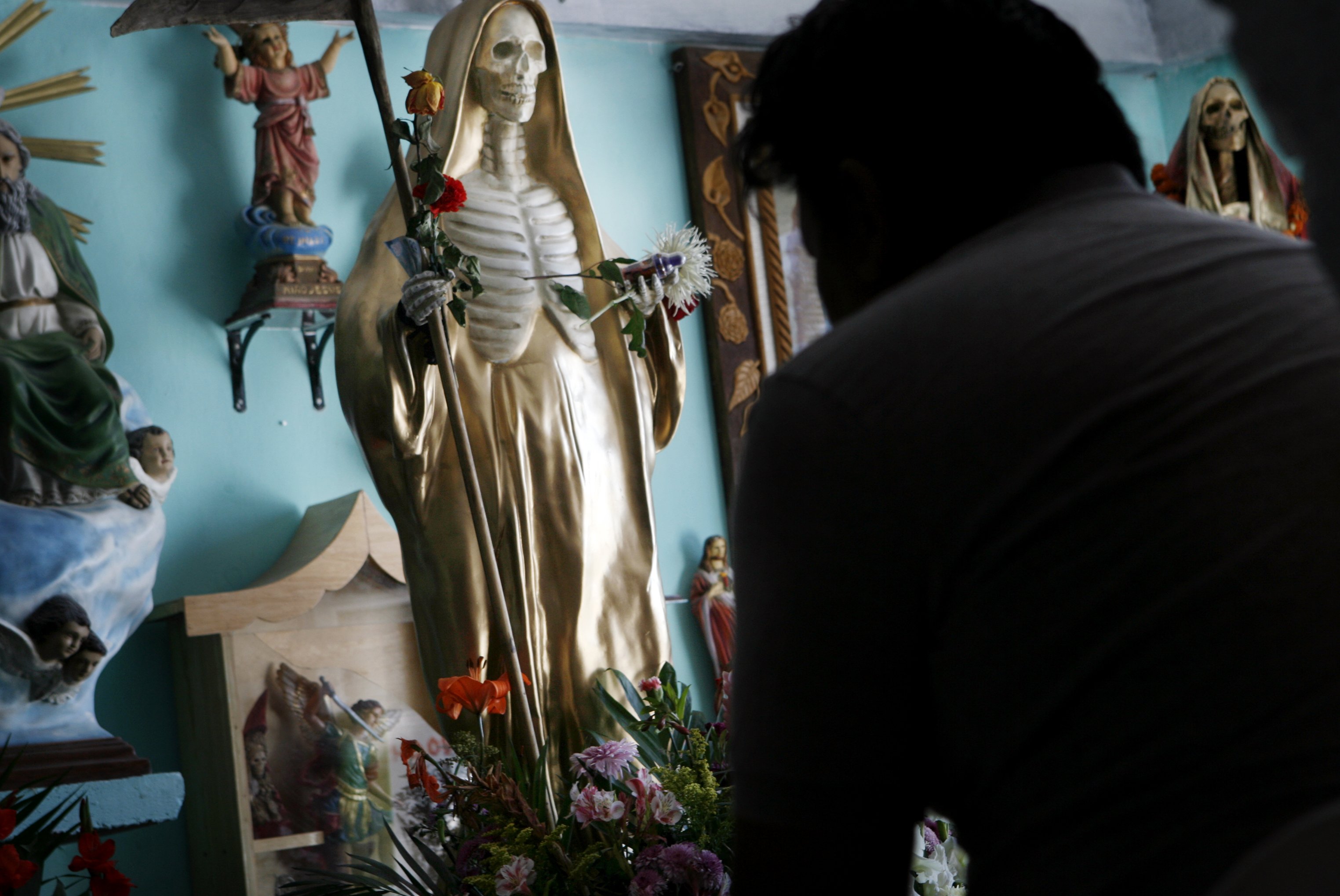
Note: I wrote these blog entries in December, as I traveled to Mexico to report on the Craig Petties story. Now that we are ready to publish our articles on the case, we are posting them.
Sunday, Dec. 13 - We started our Sunday morning searching for a chapel where people worship Santa Muerte, or Saint Death. The Catholic Church is dominant in Mexico and doesn't recognize this practice. Leaders of the faith have denied any link to crime, but some Catholic leaders and government officials say it's associated with drug traffickers and other criminals. That's why we were interested.
The chapel was in Pedro Escobedo,a small municipality in Queretaro state. Our guide was the journalist Rafael Pinzon, who told us he had never been to this place himself. We drove around in the town for a while before we found it. Rafael had to stop and ask for directions more than once. It was a bit odd to ask people "Excuse me, where's the chapel of Saint Death?"
We drove down a dirt road by a canal and finally found the place: a bright yellow rectangular building with cheerful red letters that read "Chapel of the Most Sainted Death." It was a sunny day, and Rafael went into the chapel first to check it out.
He emerged and told us that the chapel's leader said we could come in and do interviews and photos, but that he wanted a "limosa," or "donation" of 200 pesos, or less than $20.
Normally, we don't pay for access, but after some discussion, we went for it. I suppose you could call it paying for admission. It's certainly an ethical gray area, and I will understand if people criticize it. We spent about an hour taking pictures and talking with people.
The chapel was decorated with dozens of figurines of Saint Death: picture the Virgin Mary with a skull instead of a face and holding a scythe. There were a few big statues inside the square building, plus a case full of smaller ones behind glass.
This symbol was mixed with more mainstream Catholic symbols, like the image of the Virgin of Guadalupe, which is ubiquitous in Mexico. There were a few churchlike benches, but there wasn't any service going on.
People walked in and offered flowers, sometimes tucking them into the arms of the statues or placing the bouquets in front of them. Smoking was permitted, and some of the statues had ashtrays in front of them. One young woman named Carolina Solis was wearing a blouse that exposed part of her upper back, and you could see her "Santa Muerte" tattoo. Alan got a photo of her outside.
One family came in and lifted up a baby to one of the main statutes in the chapel, literally handing the child over to death. There were many posters and signs on the walls. One poster had a prayer to Saint Death: "In the name of the father and the son and the holy spirit, immaculate being of light, I implore you to grant the favors that I ask you, until the last day." There was another sign on the wall:
"God and the little skinny one are going to talk to you here today, but not on your cell phone. So please turn it off."
I talked with the founder of the chapel, 52-year-old Teodoro Reyes Diaz, a thin man who for some reason had bits of paint on his face and hands. He explained that he considered himself Catholic and saw Saint Death as one saint among many. I asked about the links to drugs. He said Santa Muerte is a "a being of light" who has the opposite effect on people: "She helps us get away from what you might call the darkness: from crime, from drugs, from alcohol," he said.
However, this was the only church I've ever been in where I saw a worshipper take out a bag of marijuana and pack a small glass pipe with it. This smoker had a hooked nose and wouldn't tell me his name. He seemed to have some sort of mental illness and his speech was a bit incoherent, though he said something about traveling throughout Mexico. He left without lighting the pipe.
There was a strong tie to commerce, too. In addition to the founder's pressure to give a "donation," there was a large section that was more or less a store. You could buy all kinds of trinkets, including candles, figurines, CDs and even T-shirts that read "A memory of my visit."
A personal note: I'm a Roman Catholic, and as we were driving away I half-jokingly told Rafael that I had to go to confession now because I had been in such a place. He said something to the effect that this visit was just for work.




